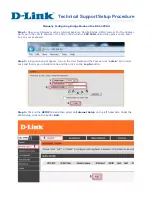
5-2
To do…
Use the command…
Remarks
Set a description for the
loopback interface
description text
Optional
By default, the description of an interface is the
interface name followed by the “Interface” string.
Shut down the loopback
interface
shutdown
Optional
A loopback interface is up on being created.
z
The subnet mask of the IP address assigned to a loopback interface can only be 32 bits in length.
z
You can configure settings such as IP addresses and IP routes on loopback interfaces. For more
information, see the
Layer 3 – IP
Services Configuration Guide
and
Layer 3 – IP
Routing
Configuration Guide
.
Null Interface
Introduction to Null Interface
A null interface is a completely software-based logical interface. A null interface is always up. However,
you can neither use it to forward data packets nor configure an IP address or link layer protocol on it.
With a null interface specified as the next hop of a static route to a specific network segment, any
packets routed to the network segment are dropped. The null interface provides you a simpler way to
filter packets than ACL. In other words, you can filter uninteresting traffic by transmitting it to a null
interface instead of applying an ACL.
For example, by executing the
ip route-static 92.101.0.0 255.255.0.0 null 0
command (which
configures a static route leading to null interface 0), you can have all the packets destined to the network
segment 92.101.0.0/16 discarded.
Currently, the AP supports only one null interface, Null 0. You can neither remove this null interface nor
create a new one.
Configuring Interface Null 0
Follow these steps to enter null interface view:
To do…
Use the command…
Remarks
Enter system view
system-view
—
Enter null interface view
interface null 0
Required
The Null 0 interface is the default null interface on your
AP. It cannot be manually created or removed.
Set a description for the
null interface
description text
Optional
By default, the description of an interface is the
interface name followed by the “Interface” string.
















































